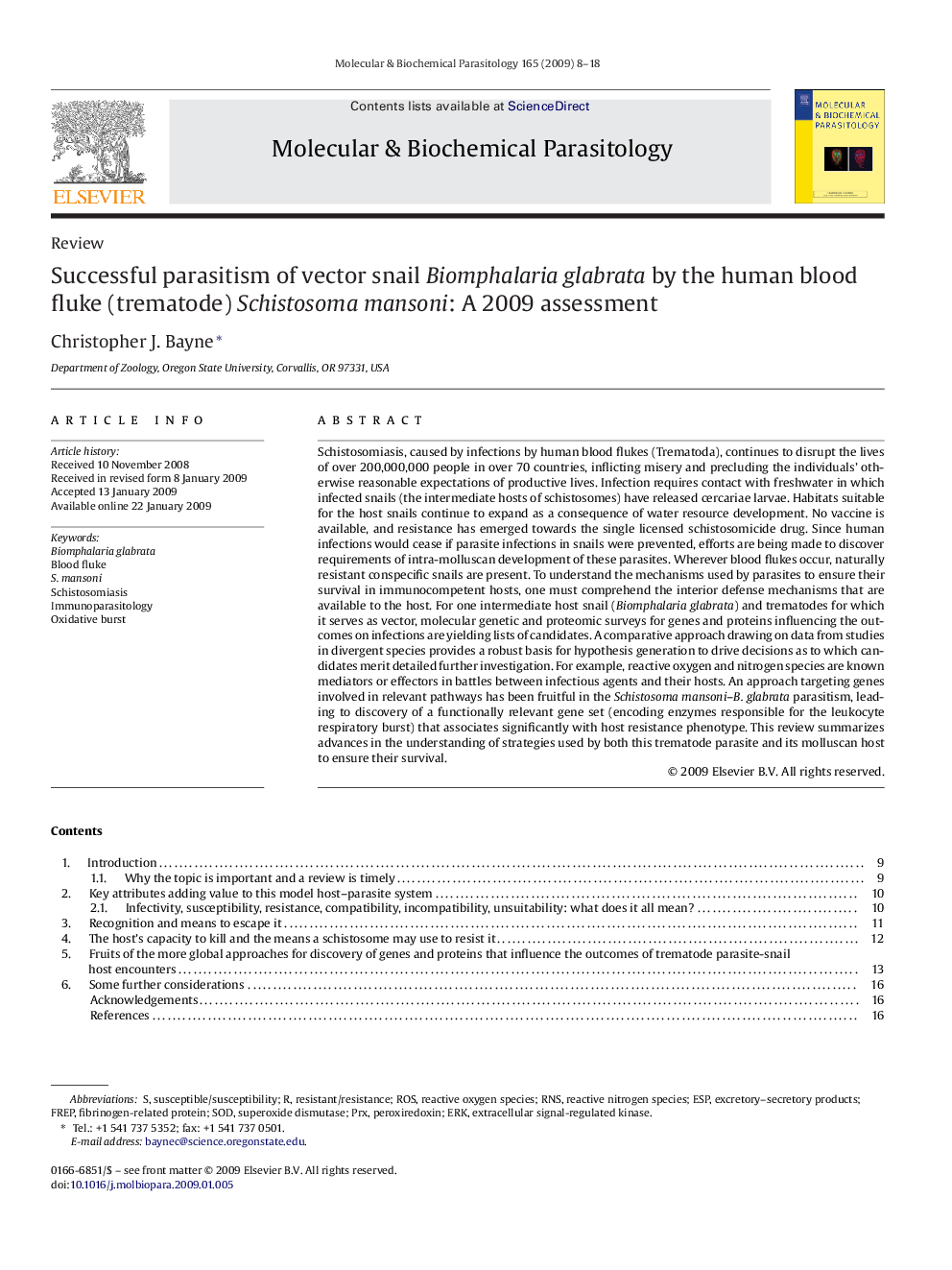| کد مقاله | کد نشریه | سال انتشار | مقاله انگلیسی | نسخه تمام متن |
|---|---|---|---|---|
| 2830029 | 1163346 | 2009 | 11 صفحه PDF | دانلود رایگان |

Schistosomiasis, caused by infections by human blood flukes (Trematoda), continues to disrupt the lives of over 200,000,000 people in over 70 countries, inflicting misery and precluding the individuals’ otherwise reasonable expectations of productive lives. Infection requires contact with freshwater in which infected snails (the intermediate hosts of schistosomes) have released cercariae larvae. Habitats suitable for the host snails continue to expand as a consequence of water resource development. No vaccine is available, and resistance has emerged towards the single licensed schistosomicide drug. Since human infections would cease if parasite infections in snails were prevented, efforts are being made to discover requirements of intra-molluscan development of these parasites. Wherever blood flukes occur, naturally resistant conspecific snails are present. To understand the mechanisms used by parasites to ensure their survival in immunocompetent hosts, one must comprehend the interior defense mechanisms that are available to the host. For one intermediate host snail (Biomphalaria glabrata) and trematodes for which it serves as vector, molecular genetic and proteomic surveys for genes and proteins influencing the outcomes on infections are yielding lists of candidates. A comparative approach drawing on data from studies in divergent species provides a robust basis for hypothesis generation to drive decisions as to which candidates merit detailed further investigation. For example, reactive oxygen and nitrogen species are known mediators or effectors in battles between infectious agents and their hosts. An approach targeting genes involved in relevant pathways has been fruitful in the Schistosoma mansoni–B. glabrata parasitism, leading to discovery of a functionally relevant gene set (encoding enzymes responsible for the leukocyte respiratory burst) that associates significantly with host resistance phenotype. This review summarizes advances in the understanding of strategies used by both this trematode parasite and its molluscan host to ensure their survival.
Journal: Molecular and Biochemical Parasitology - Volume 165, Issue 1, May 2009, Pages 8–18